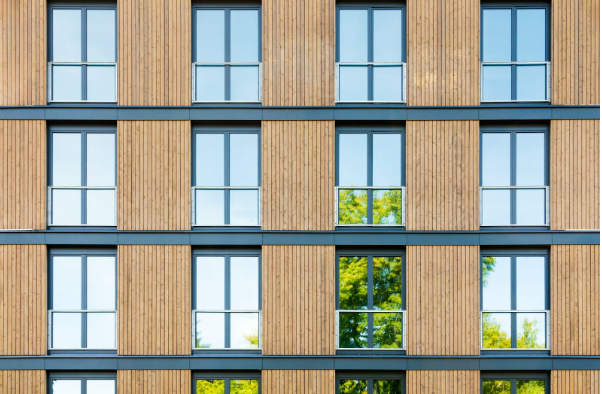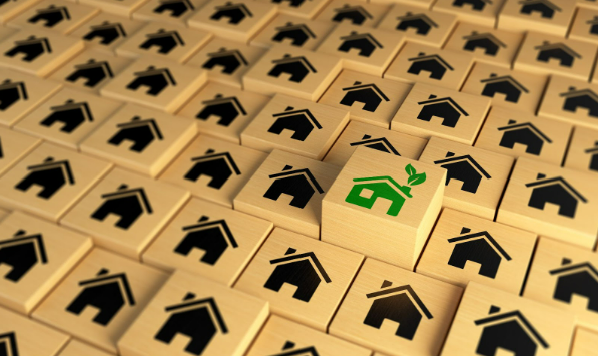Toyin-Ann Yerifor Explains the Economics of Green Building Design
BRANDVOICE
Benefits for Investors and Developers
The green building movement has witnessed remarkable growth in recent years, fueled by rising demand for sustainability and eco-conscious design. At the forefront of this revolution stands Toyin-Ann Yerifor, a Passivhaus-trained expert specializing in creating spaces prioritizing human well-being and performance.

Boasting an illustrious career spanning over two decades, Toyin-Ann has served as project director and design lead on numerous projects across Europe, North America, West Africa, and Asia. Her extensive experience and expertise afford her a unique perspective on the potential economic benefits of green building design for investors and developers, emphasizing the value of fostering healthier, more productive environments.
The Green Path to Prosperity
Green building design is not just an eco-conscious choice. It represents a wise financial decision for savvy investors and developers. According to Toyin-Ann, sustainable buildings deliver long-term savings by leveraging energy and water consumption efficiency. “The reduced operating costs associated with sustainable buildings make them particularly attractive for investors and developers,” she explains.
“Green buildings optimize water usage by incorporating features such as rainwater harvesting, low-flow fixtures, and greywater recycling systems. This reduces water consumption and waste, significantly lowering water bills and contributing to long-term financial savings,” Toyin-Ann emphasizes.
But the financial perks don’t end there. “Green buildings often command higher rents and sale prices, thanks to their lower utility costs and environmentally friendly features. This winning combination significantly boosts a property’s value and return on investment (ROI),” she adds.
In addition to the direct financial advantages, green building design also contributes to risk mitigation. By adhering to stricter environmental standards and regulations, developers can avoid potential legal and financial issues related to non-compliance. Toyin-Ann notes, “Investing in sustainable buildings reduces the risk of costly retrofits or penalties in the future, safeguarding the long-term viability of the investment.”
Another key aspect of green building design’s financial appeal is the potential for government incentives and tax breaks. Many jurisdictions offer financial rewards for developers who prioritize sustainability, further enhancing the economic benefits of green building design. Toyin-Ann remarks, “Government incentives, such as tax credits or grants, can significantly offset the initial investment in sustainable building technologies, making them an even more attractive option for investors and developers.”

Standing Out in a Sea of Sameness
In the fiercely competitive world of real estate, establishing a unique selling proposition is crucial. As the call for environmentally responsible properties grows louder, Toyin-Ann stresses the significance of integrating sustainable design elements into real estate projects to stay ahead of the curve. “By adopting green building principles, developers can distinguish their projects from conventional offerings, effectively catering to an expanding market of eco-conscious tenants and buyers,” she asserts.
This competitive advantage extends beyond aesthetics and functionality; green buildings are also seen as a reflection of corporate social responsibility. Toyin-Ann highlights that “companies and individuals who choose to occupy sustainable buildings send a strong message about their commitment to environmental stewardship, enhancing their reputation and brand image.”
The green advantage isn’t limited to commercial spaces; residential properties can also reap the benefits. Toyin-Ann notes that “homebuyers and renters are increasingly seeking energy-efficient and environmentally friendly homes, driving demand for green residential developments.” By focusing on sustainable design, developers can tap into this burgeoning market and meet the evolving preferences of discerning consumers.
The Human Element
Beyond the financial incentives, Toyin-Ann highlights the most profound impact of green building design: its ability to enhance the health and well-being of occupants. She explains, “By focusing on non-toxic building materials, natural ventilation, and biophilic design elements, green buildings create healthier indoor environments that promote comfort and productivity.”
Emphasizing the benefits of enhanced indoor air quality, Toyin-Ann highlights the critical role green buildings play in addressing this issue. “Low-emitting materials and efficient ventilation systems in green buildings reduce the accumulation of harmful pollutants, helping prevent respiratory issues, allergies, and other health problems,” she explains.
Moreover, Toyin-Ann emphasizes the importance of natural lighting in green buildings. “By incorporating ample daylight and maximizing window views, green design can boost an occupant’s mood, reduce eye strain, and improve overall well-being,” she states. This thoughtful approach to light extends to energy-efficient lighting systems, which can further enhance the experience for building inhabitants.

The Rise of Biophilic Design
Biophilic design, an emerging trend in green building design, acknowledges the profound connection between humans and nature. Toyin-Ann is a strong advocate of this approach, stating that “by weaving natural elements such as plants, water features, and natural materials into the built environment, biophilic design nurtures well-being, improves cognitive function and reduces stress, creating a more inviting and restorative environment for occupants.”
Additionally, Toyin-Ann underscores the value of designing spaces with acoustics in mind. “Green buildings often feature sound-absorbing materials and carefully planned layouts to minimize noise pollution, fostering a more peaceful and productive atmosphere,” she says.
The focus on well-being extends to thermal comfort as well. Toyin-Ann points out that green buildings employ passive design strategies and advanced heating, ventilation, and air conditioning (HVAC) systems to maintain optimal temperature and humidity levels, ensuring a comfortable environment for occupants.
A Greener Tomorrow
Looking to the future, the economics of green building design offers many benefits for investors and developers, as expertly illustrated by Toyin-Ann. Beyond cost savings, increased property value, and enhanced marketability, sustainable building practices profoundly impact the health and well-being of occupants, creating healthier, more comfortable, and more productive environments.
With her unwavering dedication to sustainable design and leadership, Toyin-Ann Yerifor has established herself as a trailblazer in the green building movement. Her dream of developing a sustainable city reflects her commitment to fostering a healthier environment for both people and the planet.
“By embracing green building design principles, investors and developers have the unique opportunity to not only achieve financial success but also contribute to a more sustainable and healthier future for all,” Toyin-Ann asserts.
As more investors and developers recognize the value of sustainable design, the green building movement will continue gaining momentum, transforming how we design, build, and inhabit spaces. On her part, Toyin-Ann is dedicated to being an advocate for sustainable design and well-being practices in the U.S. and globally.